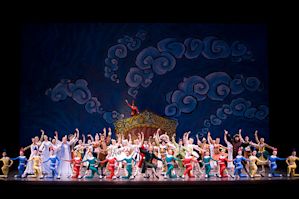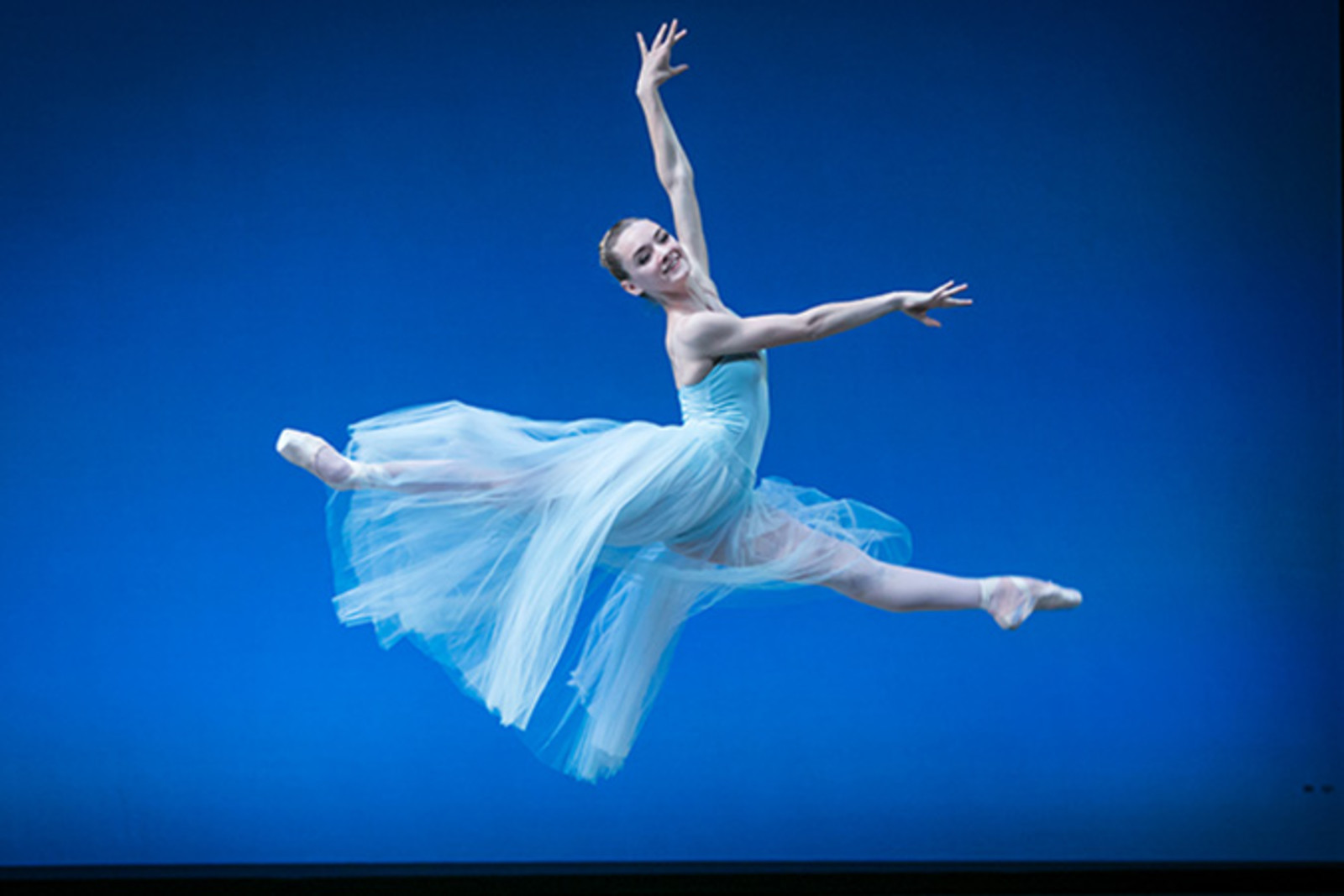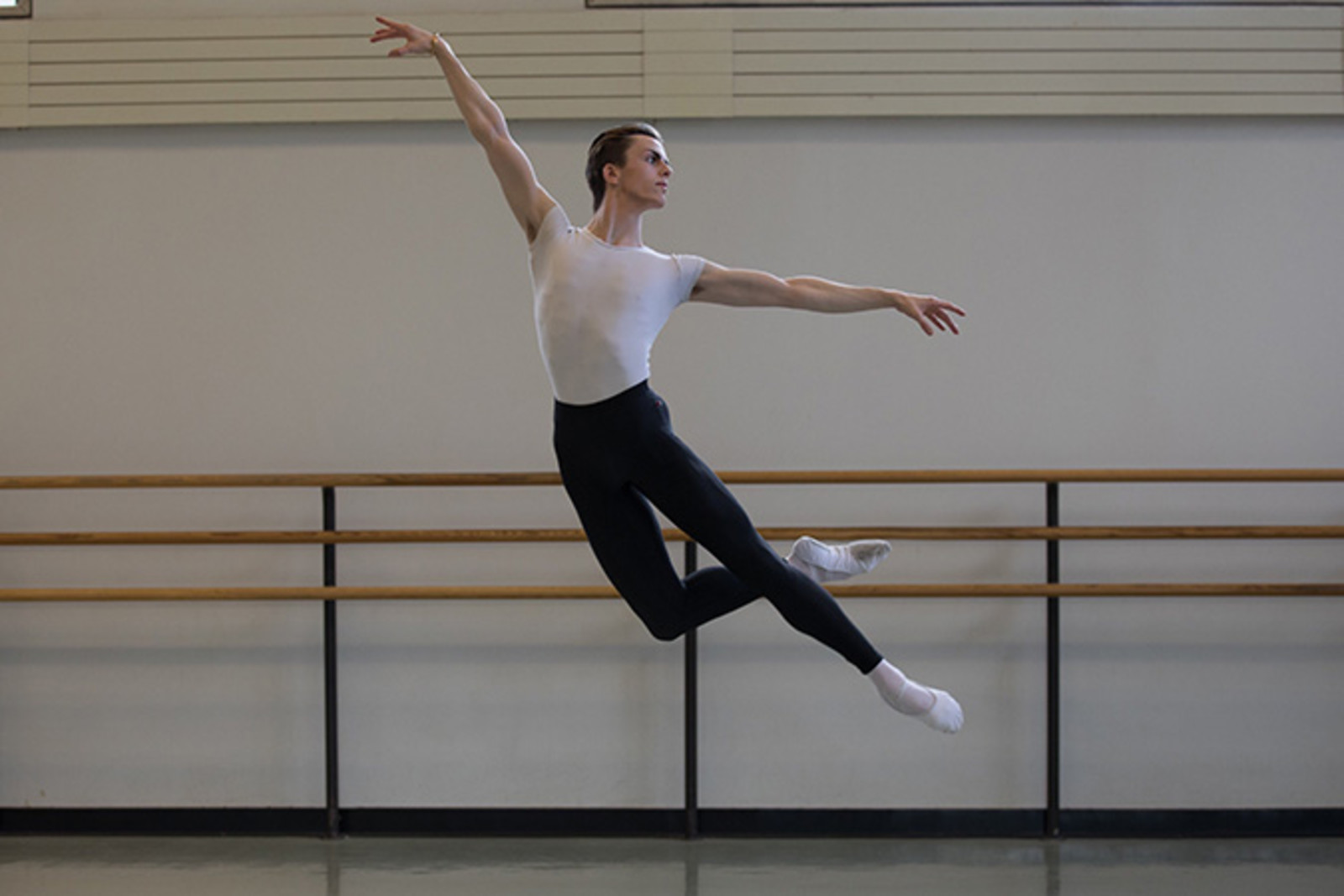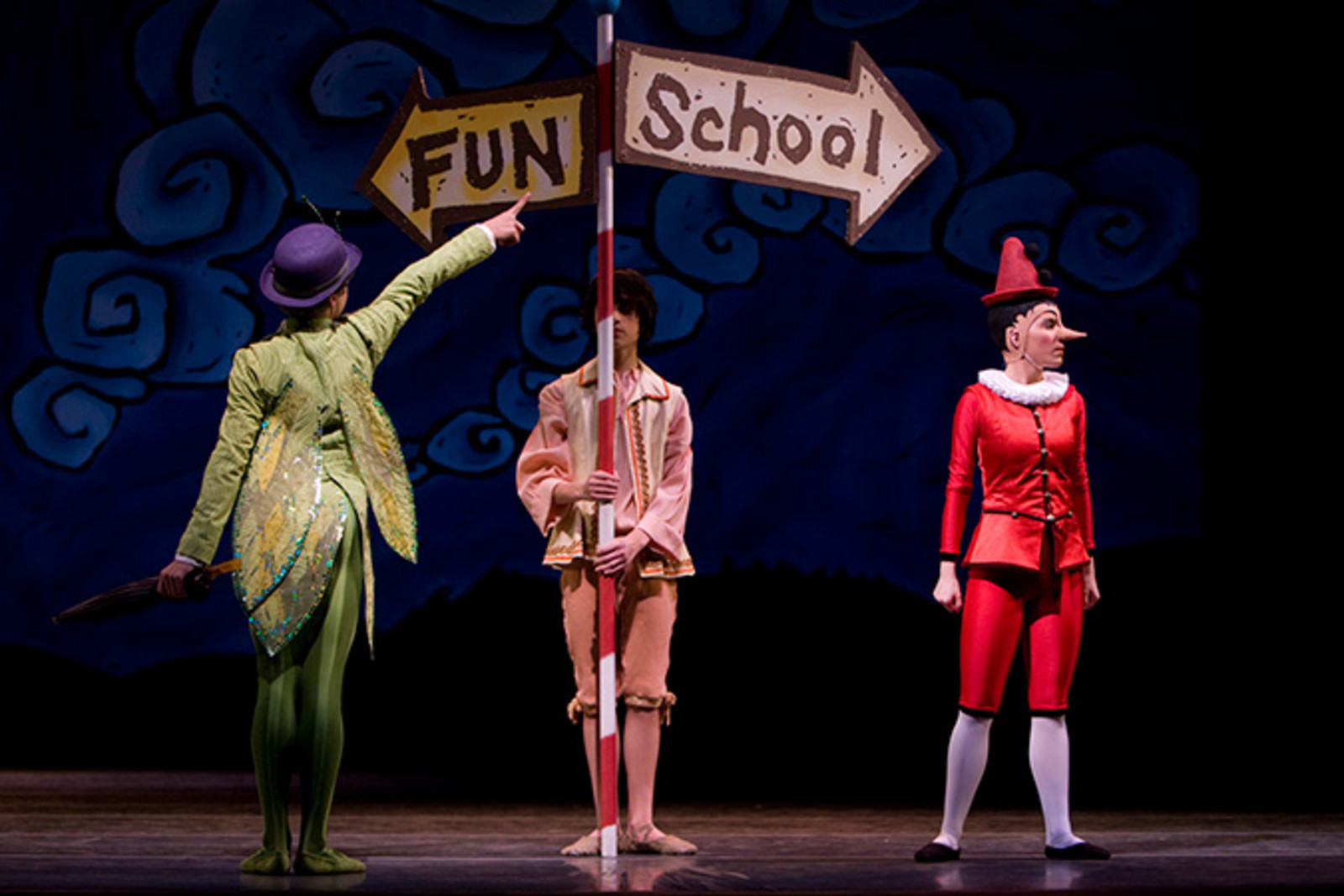Dancing the Dream

Two gifted dancers in PNB’s Professional Division share their experience of training to become a company dancer.
When Pacific Northwest Ballet (PNB) principal dancer Lucien Postlewaite soars above the stage in a solo, seemingly released from the pull of gravity, the audience sees the motion, not the effort behind it. They see the impossible athletic movements, not the intense years of strenuous preparation and the stringent dance education behind them. Even most ballet aficionados have only a vague idea of all that goes into the making of a professional dancer.
Grace Rookstool, 18, and Barret Withington, 19, are two young dancers in PNB’s Professional Division, one of the premier professional training programs in the country. For them, becoming an elite dancer means arriving at the Phelps Center, a state-of-the-art dance facility on lower Queen Anne, by 8:30 a.m. six days a week, sometimes seven, and often not leaving until after the sun has set. They study with PNB’s faculty, many of them dancers they grew up idolizing. For Grace, this means wearing through two pairs of pointe shoes a week. For Barret, unfortunately, this means crutches as he heals from a torn meniscus. But neither would have it any other way. They are dancing the dream.
Dancers from all over the country have been studying ballet most of their young lives before being invited to join the Professional Division (PD). The PD program trains about fifty dancers at a time, ranging in age from sixteen to nineteen, roughly a third of them men. Most spend two years in the program perfecting their technique and developing artistry. A few are hired after just one year. While in the program, many PD students earn opportunities to perform in PNB productions. Throughout the year, artistic directors from companies around the world visit to view the dancers, a silent interview that can launch a career.

Grace, a second year PD student, began her journey to the cusp of professional dancing at age four on Whidbey Island. One of ten children, Grace had four older sisters. “I started dancing because of my older sisters. I watched them put on the ballet shoes, the tutus, the tiaras and said, I want to do that.” At age eight, she came to PNB. “When I was around eleven, my dream was to become a ballerina. I didn’t know I could make it happen until I was sixteen, when I realized that if I give it my all—really, really go for it—maybe I could make this my life. I grew up watching Kaori Nakamura [a former PNB principal dancer]. She’s beautiful. It’s crazy to think that she’s teaching me now.”

Barret, a first year PD student, had, by the age of five, convinced his parents that dance was his destiny. “I was always putting on shows— full production, costume, makeup. It was obvious where I needed to go.” Raised in Seattle, Barret spent eight years at PNB. At age fourteen he was accepted to the School of American Ballet, which is part of the New York City Ballet. More than two thousand kids audition for two hundred spots in their summer program. Of those selected for the summer, only about ten are invited to join the school. Barret says, “It was the chance of a lifetime. You’re only asked to do it once—to have the opportunity to walk down the hallways that the greats did. Balanchine founded it, Peter Boal [PNB Director] went there as a kid. It’s a huge institution in the dance world, particularly in ballet. That was a huge privilege, and it was awesome, but it led me back here. The PD program at PNB has a great sense of community and family, and it’s really special to be back. When I was younger, I saw Lucien Postlewaite perform Romeo and knew that was what I wanted to be. Now I get to be on the stage with him.
The PD curriculum includes technique, pointe, variations, men’s class, adagio, modern, choreography, Pilates, essential barre, strength training, and seminars on such topics as nutrition, personal safety and life skills. Grace and Barret finished high school before enrolling, but some students are concurrently completing high school and balance training with studying. PD students with high school degrees can take college-level classes with PNB company dancers taught by Seattle University faculty at the Phelps Center.
PNB training is based on the Balanchine technique, but has a faculty from many different backgrounds which rounds out the curriculum. Students get a foundation of contemporary work every week. And because PNB frequently casts PDs as understudies for company performances, they gain experience. “Lots of Balanchine is about being quick, about throwing your body weight off your leg, playing with the music, creating your individual style within these set parameters,” Barret says. “It’s not about how long you can hold the balance, or how many pirouettes you can do, or how many tricks. It’s about how you’re making the movements your own. That sets us up for doing these more contemporary works that are really about playing with the way your body works.”
Grace and Barret both emphasize the excruciating demands the athletic rigor of ballet puts on the body. Throughout their constant training, they spend hours strengthening, resting and icing. “There are lots of aches and pains, lots of Tiger Balm, blisters on your feet, corns, sore ankles,” Grace says. “People are constantly going down. It’s super hard work. There are days when you say, I don’t know if I can do this. Then you see one of the company members out there, doing what she loves, and you know you want to be doing that. All the hard work, the time you put into it, are totally worth it in the end.”
With his recent injury, Barret knows only too well the challenges ballet places on the body. He says, “You work through pain because you’re passionate. You’re grinding away at your bones. You’re doing things with your body that aren’t humanly natural. But we do it because we love dance and it’s beautiful. There’s no other joy quite like nailing that impossible turn. There’s this constant striving for that unattainable thing, but sometimes you almost get there, and there’s no greater feeling than that."
The taxes every great dancer must pay include the psychological challenges of self-doubt. Once considered the best dancer in their class, now they’re in a program where everyone has had the same experience. “As a dancer, you’re forced to look in the mirror and analyze yourself for hours each day,” Barret says. “That endless self-critique and mental analysis can be hard on a dancer.”
But the criticism also spurs growth. Dana Hanson, a member of PNB's faculty and a former soloist with the New York City Ballet, is one of Grace’s cherished mentors. “She was very hard on me in class, but those corrections paid off in the end,” Grace says. “Some days the criticism gets annoying, like they’re picking on you for the same stuff, over and over, but they’re just trying to help you master that step. Ultimately, it’s beneficial.”

The constant refinement is necessary to help the dancer make ballet look effortless and natural when it’s the hardest thing to do. The dance must look seamless and the dancer confident. On stage, a veneer of grace and ease cloaks the mix of sweat, pain and pushing through failure that has carried the dancer into the spotlight.
Another perennial challenge the PD’s face is the competition for the limited number of company positions. While many dance companies hire graduates of the PD program, including PNB, that is far from a job guarantee. Many PDs get jobs in companies, but the most coveted jobs on world stages are insanely competitive. “It’s a big team here, especially with the PDs,” Barret says. “But if you don’t have a competitive spirit, you won’t make it far in dance. The competition is part of what creates talent in us and why we do what we do.”
With just a few months left, PD students are eagerly hoping to hear from artistic directors about jobs. They are also busy rehearsing for the upcoming PNB student performance of Pinocchio (March 17 and 23). Additionally, many have been cast in Next Step (June 14), a choreographic showcase where the PDs perform an all-premiere lineup of works created exclusively for them by PNB Company dancers. “I’m very excited,” Grace says. “Nancy Casciano and Sarah Pasch have each designed a piece for me that showcases my skills.”
With his injury, Barret will not be performing in either. He looks forward to getting his showcase next year as a second-year PD student. Grace awaits word from artistic directors around the country. “I hope to be part of a company somewhere, not in a trainee spot,” Grace says. “I want to be earning a paycheck. I do have a few offers already. I’ve always dreamed of dancing at PNB. Hopefully someday.”

